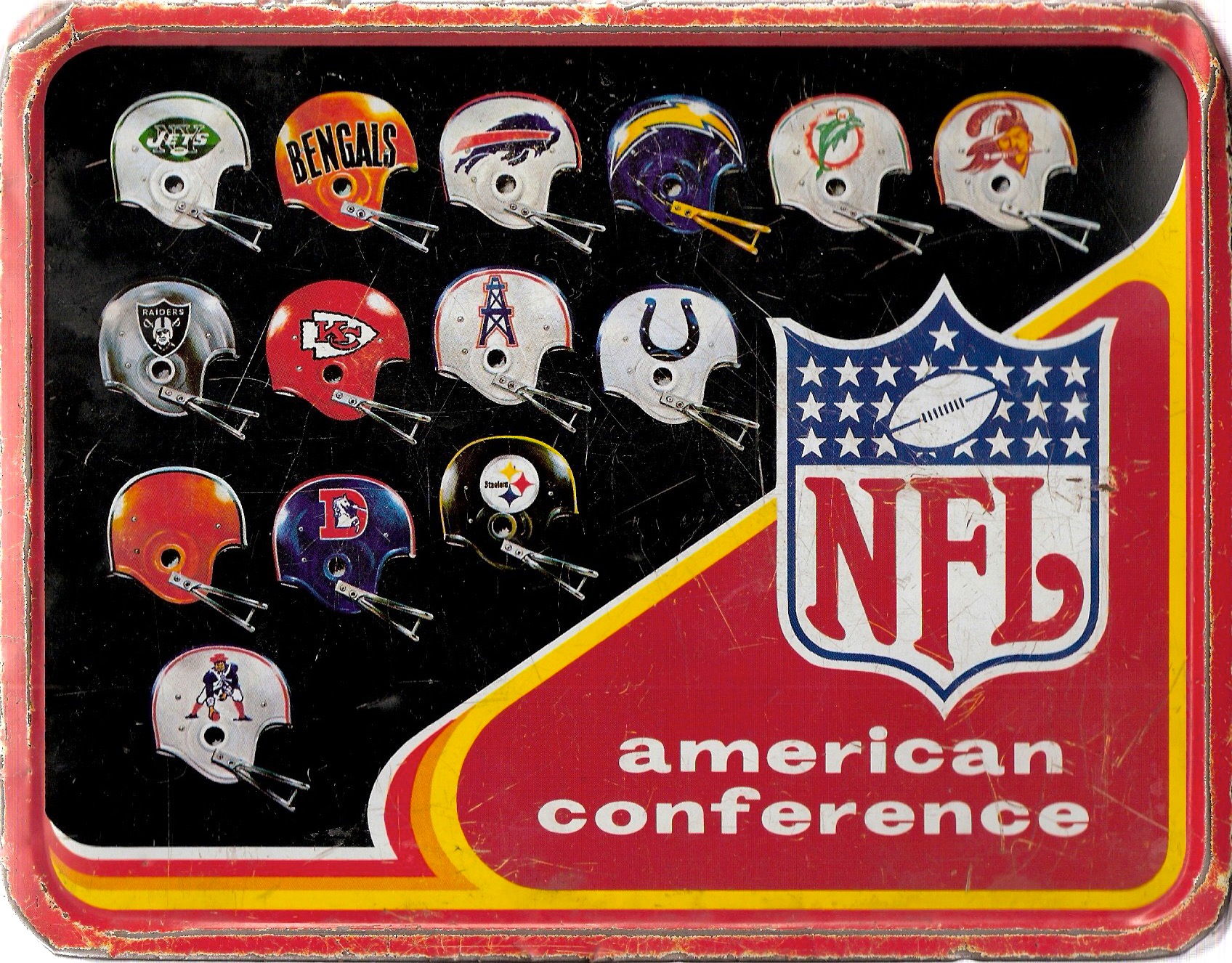This Sunday I’ll be watching the Patriots and Falcons play Super Bowl LI via wee-hours live-stream in the southern African beach town of Swakopmund, Namibia. This game-day ritual is a time-honored tradition for me: Since I first traveled overseas 20 years ago, I’ve followed Super Bowl games from 16 different cities in 9 separate countries across 4 continents. When the Broncos beat the Panthers last year I was streaming the game on my laptop in Buenos Aires; when the Giants upset the Patriots in 2008, I was in a Rio de Janeiro sports bar; when the Broncos won their first title by beating the Packers in 1998, I watched it on an American Forces Network broadcast in South Korea.
Fifteen years ago, in 2002, I put together a report for National Public Radio’s “Savvy Traveler” about the daunting task of watching the Super Bowl from southern Thailand (where I was holed up in a residence hotel, writing Vagabonding). American public radio audiences aren’t exactly the target-demographic for NFL-related reportage, so it was comical to hear host Diana Nyad attempt to introduce my story to listeners. “If you have zero interest in the Super Bowl hype, you’re not alone,” she said in the preface to my segment. “I’m asking you to put aside your loathing of all things Super Bowl, if that’s where you stand, and try to relate to Rolf and his quest to connect with his memories of home.”
My Thailand Super Bowl dispatch — my first-ever reported feature for public radio — was a goofy, lighthearted account of trying to figure out a way to watch the big game in the backwater Andaman Sea town of Ranong. Most of my interviewees were befuddled European expats who were staying in my residence hotel, and my central thematic conceit was the notion that the Super Bowl was part of my “cultural heritage” as an American.
Super Bowls and Swamis in India
What seems strange, in retrospect, are the details I left out of that radio piece — details that might have evoked a much richer personal relationship with NFL football than I was letting on at the time. The previous year, for example, in 2001, I was in Allahabad, India on Super Bowl Sunday. I wasn’t able to watch the game on TV that year (as I noted in the NPR dispatch) but my semi-failed attempt at following the game in real time amid India’s massive Kumbh Mela festival was a weird and compelling story in and of itself.
 The Kumbh Mela festival had attracted more than 60 million Hindu pilgrims to the shores of the Ganges over an eight-week stretch that year, and I awoke the morning of Super Bowl Sunday as a guest in a tent that housed a number of priests from the Rashtrasant ashram. When I explained my desire to watch the game, the head swami was so intrigued that he personally guided me on a quest to find a satellite TV connection.
The Kumbh Mela festival had attracted more than 60 million Hindu pilgrims to the shores of the Ganges over an eight-week stretch that year, and I awoke the morning of Super Bowl Sunday as a guest in a tent that housed a number of priests from the Rashtrasant ashram. When I explained my desire to watch the game, the head swami was so intrigued that he personally guided me on a quest to find a satellite TV connection.
As we walked alongside throngs of Hindu pilgrims on the dusty river flood plain, the swami grilled me with questions: Does winning a game of American football hinge on wit or brawn? Are the strategies of the game at all similar to those of chess? Are the Baltimore Ravens an allusion to Edgar Allen Poe? Talk of football led to a discussion about Shakespeare and Thomas Hardy, which led to a discussion about Bill Clinton and Monica Lewinsky. The swami (who was in his sixties and looked a little like the 1970s TV detective Kojak) told me about his 10-year stint in the army as a young man, and his more recent career as a university English professor. He held forth on how some vices were excusable, but only if you indulged in them with a good heart. He explained why one must strive to be thankful for life at all times. He advised me to avoid useless love affairs.
After several hours of walking my way past cow-dung fires, massive bamboo temple complexes, and cobra-clutching sadhu ascetics, I gave up on the notion of satellite TV and settled for a telecom kiosk that featured a row of dial-up Internet computers. I logged in to the ESPN.com scoreboard page and began hitting the refresh button every few minutes. As the stats of Super Bowl XXXV flashed across the screen, I explained to the swami what was happening in real time on the other side of the world. We both rooted for the Ravens, who beat the New York Giants 34-7.
The Curious Case of My NFL Fandom
I have no explanation, in retrospect, as to why I left this anecdote out of my radio dispatch. I could be that NPR didn’t give me much airtime to work with, and I needed to focus on the real-time narrative of finding a Super Bowl broadcast in provincial Thailand. But my previous year’s experience in India hinted that (in spite of Diana Nyad and all the public-radio snobs who might harbor a “loathing of all things Super Bowl”) choosing to follow football hasn’t been a soulless exercise in mass entertainment. For me, it was a way of conversing with younger versions of myself, going all the way back to my earliest memories.
 Typically, when asked about my lifelong interest in football (a sport I never played), I trace it all back to age four, when my then-teenaged uncle was a star running back on his high school football team. While I’m sure this played a factor, however, it doesn’t really account for the specificity of my fixation with the National Football League, whose teams and uniforms figure in my earliest pre-school crayon drawings.
Typically, when asked about my lifelong interest in football (a sport I never played), I trace it all back to age four, when my then-teenaged uncle was a star running back on his high school football team. While I’m sure this played a factor, however, it doesn’t really account for the specificity of my fixation with the National Football League, whose teams and uniforms figure in my earliest pre-school crayon drawings.
Recently, in an essay about the influence of the Sears Christmas Wish Book in American culture, I pointed out that the NFL was quite savvy in its efforts to appeal to young boys through branded products like team-logo pajamas and helmet-replica radios. This was, I have since realized, part of a much broader NFL marketing push in the mid-1970s. Before there was such a thing as a “Happy Meal,” for example, McDonald’s offered young diners a seasonal series of magazine-style booklets called “History of the Super Bowl,” which featured NFL stats and colorful photo spreads. I begged my parents to take me to McDonald’s with the express intent of collecting these booklets, and I read them with devotional intensity.
 This Sunday, as I stream the Super Bowl on my laptop in Swakopmund (less than one day after having arrived in Namibia from South Africa), I will, in a sense, be hanging out with the seven-year-old kid who collected those “History of the Super Bowl” booklets at McDonald’s. I’ll also be hanging out with the fifteen-year-old who knew all the words to the Chicago Bears’ spectacularly corny “Super Bowl Shuffle” rap in 1986, as well as the thirty-year-old who asked an Indian swami to help locate a broadcast of the Ravens-Giants contest in Allahabad in 2001. Watching the game will be — as it always is — less about the specifics of the game than the ongoing ritual of watching it each year, wherever I am in the world, and reflecting on all the times I watched it before.
This Sunday, as I stream the Super Bowl on my laptop in Swakopmund (less than one day after having arrived in Namibia from South Africa), I will, in a sense, be hanging out with the seven-year-old kid who collected those “History of the Super Bowl” booklets at McDonald’s. I’ll also be hanging out with the fifteen-year-old who knew all the words to the Chicago Bears’ spectacularly corny “Super Bowl Shuffle” rap in 1986, as well as the thirty-year-old who asked an Indian swami to help locate a broadcast of the Ravens-Giants contest in Allahabad in 2001. Watching the game will be — as it always is — less about the specifics of the game than the ongoing ritual of watching it each year, wherever I am in the world, and reflecting on all the times I watched it before.
Postscript: Super Bowl Titles I Celebrated
Late last year, when I was redesigning this website and thinking about using it to reflect on matters not related to my usual journalistic pursuits, I decided to put together a top-ten list of sports titles I’ve celebrated over the course of my life. The impetus here was the unexpected emotional intensity of watching the Kansas City Royals win the baseball World Series in 2015. That experience holds a high spot on the top-ten rundown, while, oddly enough, the short-list of Super Bowl titles I’ve celebrated hold the lowest rungs on the list.
My explanation for why this is the case is inseparable from the tenth most affecting sports title I’ve ever celebrated.
10) When the Kansas City Chiefs Won Super Bowl IV
 Having been born and raised in Wichita, it was natural for me to embrace the pro sports teams based three hours away in Kansas City. As a little kid in the mid-1970s it was easy to root for baseball’s Kansas City Royals, who fielded excellent teams every year. Rooting for football’s Kansas City Chiefs, on the other hand, was a tougher prospect, since they were in the early stages of a playoff drought that would effectively last for two decades. I recall how, in the early 1980s, the Chiefs collaborated with regional police departments to hand out specially designed football cards that encouraged kids to practice good citizenship — but I considered them inferior to the store-bought Topps cards that depicted Royals baseball players.
Having been born and raised in Wichita, it was natural for me to embrace the pro sports teams based three hours away in Kansas City. As a little kid in the mid-1970s it was easy to root for baseball’s Kansas City Royals, who fielded excellent teams every year. Rooting for football’s Kansas City Chiefs, on the other hand, was a tougher prospect, since they were in the early stages of a playoff drought that would effectively last for two decades. I recall how, in the early 1980s, the Chiefs collaborated with regional police departments to hand out specially designed football cards that encouraged kids to practice good citizenship — but I considered them inferior to the store-bought Topps cards that depicted Royals baseball players.
In the mid-late 1960s, however, the Chiefs were perennially one of the best teams in football — and on January 11, 1970 they’d claimed the Super Bow IV title with a gritty 23-7 win over the Minnesota Vikings. Since this happened exactly nine months and two days before I was born, I can’t exactly claim to have celebrated this title in real-time — though I could make the case for having been conceived in the flush of that victory. That Super Bowl title set a fine precedent for Chiefs fans — one that fans of older NFL franchises like the Lions and Browns and Cardinals can’t claim — but the team hasn’t exactly lived up to that precedent in the ensuing decades.
The fatal turning point for the Chiefs’ fortunes may well be traced to Christmas Day of 1971, when Kansas City’s normally reliable kicker Jan Stenerud shanked a 31-yard field goal in the final minute of regulation time during a divisional playoff game against the Miami Dolphins. Stenerud’s 42-yard field goal attempt was blocked on the first possession of overtime, and — in what still stands as the longest game in NFL history — Miami ended up winning when Dolphins kicker Garo Yepremian booted a 37-yard field goal seven minutes and 40 seconds into a second overtime period. Kansas City wouldn’t win another playoff game until the 1991 season — a full 20 years later — when a Chiefs team coached by Marty Schottenheimer beat the Oakland Raiders 10-6 in the AFC Wild Card game (Kansas City was subsequently blown out 37-14 by the Buffalo Bills in the divisional playoff).
 The 1990s Schottenheimer era turned out to be a bright spot for the Chiefs — although the team’s playoff field-goal curse continued throughout the decade. In a Wild Card game at the end of the 1990 season, for instance, Chiefs kicker Nick Lowery (who had connected on his previous 22 attempts that season) missed a would-be game winner from 52 yards out against Dan Marino’s Dolphins as time expired. In 1995 the Chiefs won the AFC West title with a league-best 13-3 record, but lost to an inferior Indianapolis Colts team in the divisional playoff when kicker Lin Elliot shanked three field goal attempts (from 35, 39, and 42 yards) en route to a 10-7 loss. Two years later, in 1997, the Chiefs again took the AFC West title with a 13-3 record, only to lose 14-10 to the Denver Broncos after a holding penalty nullified a 34-yard Pete Stoyanovich field goal in the second quarter, and a fake attempt late in the game failed when Chiefs holder Louie Aguiar got stuffed three yards shy of a first down.
The 1990s Schottenheimer era turned out to be a bright spot for the Chiefs — although the team’s playoff field-goal curse continued throughout the decade. In a Wild Card game at the end of the 1990 season, for instance, Chiefs kicker Nick Lowery (who had connected on his previous 22 attempts that season) missed a would-be game winner from 52 yards out against Dan Marino’s Dolphins as time expired. In 1995 the Chiefs won the AFC West title with a league-best 13-3 record, but lost to an inferior Indianapolis Colts team in the divisional playoff when kicker Lin Elliot shanked three field goal attempts (from 35, 39, and 42 yards) en route to a 10-7 loss. Two years later, in 1997, the Chiefs again took the AFC West title with a 13-3 record, only to lose 14-10 to the Denver Broncos after a holding penalty nullified a 34-yard Pete Stoyanovich field goal in the second quarter, and a fake attempt late in the game failed when Chiefs holder Louie Aguiar got stuffed three yards shy of a first down.
Indianapolis has proven particularly troublesome for the Chiefs in more recent years, having knocked them out of first-round playoff games three times between the 2003 and 2013 seasons. This included a soul-crushing January 4, 2014 Wild Card game, when the Chiefs went up 38-10 early in the third quarter, only to piss the lead away as the second half progressed, losing 44-45 after the Colts put together the second-biggest comeback victory in NFL postseason history. Two years later the Chiefs were able to notch their first playoff win in more than two decades, beating the Houston Texans 30-0 in the Wild Card, though the Patriots knocked them out of the playoffs a week later.
This season the Chiefs edged out the Oakland Raiders to win the AFC West title and clinch a first-round playoff bye with a 12-4 record — but their regular-season performance didn’t always instill confidence. Granted, the team put together a string of exciting last-second wins against the Chargers, Panthers, Broncos, and Falcons (as well as tepid losses against the Texans, Buccaneers, and Titans) — but these crazy victories always felt lucky, and it never seemed like the team was playing to its full potential. Hence my pessimism when the Chiefs faced the Pittsburgh Steelers on the AFC divisional playoff in early January. I was staying at a guesthouse in Maputaland, Mozambique at the time, and I couldn’t find a channel that was broadcasting the game in the wee-hours, but I wasn’t surprised when I went online that day and saw that the Steelers capitalized on a number of Chiefs miscues and won the game 18-16.
 Since the Chiefs’ ill-fated double-overtime divisional-round loss in 1971, Kansas City has only made it to the AFC Championship game once (a 30-13 thrashing at the hands of the Bills at the end of the 1993 season) — and hence I can never have full faith in their fortunes, even after a promising season. I’d be happy if the team proved my skepticism wrong in the not-too-far future, but for now I’ll just have to renew my lifelong pride in Super Bowl IV and make the most of watching other teams play in the big game.
Since the Chiefs’ ill-fated double-overtime divisional-round loss in 1971, Kansas City has only made it to the AFC Championship game once (a 30-13 thrashing at the hands of the Bills at the end of the 1993 season) — and hence I can never have full faith in their fortunes, even after a promising season. I’d be happy if the team proved my skepticism wrong in the not-too-far future, but for now I’ll just have to renew my lifelong pride in Super Bowl IV and make the most of watching other teams play in the big game.
9) When the New Orleans Saints Won Super Bowl XLIV
The fact that the Chiefs have not, in my lifetime, been a reliable playoff-performing team — and in particular because they were so hapless in the formative (for me) 1970s and 1980s — my NFL team loyalties have been somewhat up for grabs over the years. Whereas the Royals’ successful 1970s and 1980s teams guaranteed that my baseball loyalties would always stay with Kansas City, my pro-football loyalties have drifted from year to year. While in pure emotional terms the most affecting NFL team for me was probably the 1977-78 Dallas Cowboys (see #8) below, I have, at times, found satisfaction in Super Bowl titles by the Washington Redskins (’82-’83), Chicago Bears (’85-’86), St. Louis Rams (’99-’00), Green Bay Packers (’10-’11), and Seattle Seahawks (’13-’14). With the exception of the Packers (who I liked because of the team’s players, including Kansas-born receiver Jordy Nelson) I rooted for most of these teams because they had not previously won Super Bowls and seemed overdue.

The underdog factor was a big reason why I rooted for the New Orleans Saints throughout the 2009 season. The Saints franchise was, famously, one of the worst in the history of the NFL — the team didn’t have a winning season until its 20th year of existence, and didn’t win a playoff game until its 34th season in the league. But in the years after Hurricane Katrina the flood-ravaged city of New Orleans had, in general, come to be seen as a kind of underdog metropolis. I had lived in New Orleans in the months leading up to Katrina (and I’d visited it many times in the months after), so I knew what the Saints meant to the people who lived there. The team’s unexpected run to the NFC championship game in 2006 was an inspiring bit of good news in the wake of the disaster — and when the 2009 Saints started the season with a 13-game winning streak I became a certified Saints bandwagon fan.
In retrospect, it’s easy to forget that the Saints almost didn’t make it to the Super Bowl that year, since they were largely outplayed by the Minnesota Vikings in the NFC championship game. It was five Vikings turnovers — including a spectacularly boneheaded interception thrown by Vikings QB Brett Favre in the waning moments of regulation — that effectively led to a 31-28 Saints overtime victory. I was flying home to Kansas from New York that evening, and I was able to watch/celebrate the end of game at my friend Mike’s house after he picked me up at the Wichita airport. (Mike, who typically doesn’t give a crap about sports, enjoyed the Saints win, if only for my enthusiasm — and the fact that we’d celebrated his bachelor party in New Orleans a couple years earlier.)
 The Saints went on to win the Super Bowl 31-17 over the Indianapolis Colts. The game was much closer than the score suggests, and its momentum swung on the Saints’ gutsy onside kick call coming out of halftime. I watched the game on TV in Kansas — one of the few Super Bowls I’ve watched Stateside in recent years — and I texted joyful congratulations to my New Orleans friends when the Saints won. The celebration that spread across the city in the ensuing hours and days was itself a joy to watch, and I always get a kick out of watching this video in particular.
The Saints went on to win the Super Bowl 31-17 over the Indianapolis Colts. The game was much closer than the score suggests, and its momentum swung on the Saints’ gutsy onside kick call coming out of halftime. I watched the game on TV in Kansas — one of the few Super Bowls I’ve watched Stateside in recent years — and I texted joyful congratulations to my New Orleans friends when the Saints won. The celebration that spread across the city in the ensuing hours and days was itself a joy to watch, and I always get a kick out of watching this video in particular.
8) When the Dallas Cowboys Won Super Bowl XII
Though I can recall watching NFL football since I first learned how to follow the game on TV, the 1977 Dallas Cowboys provided me with my first satisfying real-time Super Bowl victory, when they defeated the Denver Broncos 27-10 on January 15, 1978. This victory was, for me, an offshoot of the 1975 season — two years earlier — when the Cowboys lost a 21-17 heartbreaker to the Pittsburgh Steelers in Super Bowl X. And man, I hated the Steelers.
 Looking back on the NFL games I watched as a kid, I remember the emotional resonance of watching the teams play as much as the details of the games themselves. I was, as a youngster (and I remain so, in some ways, as an adult), enraptured by the good-versus-evil aspect of watching a team you loved play against a team you hated. In baseball, this meant watching the Kansas City Royals play — and, invariably, lose to — the hated New York Yankees in three consecutive American League Championship Series (1976, 1977, 1978). And while I regarded the Yankees as the most evil team in baseball, I considered the Steelers and the Oakland Raiders to be the most evil teams in football. I’m not sure why this was the case. It could have something to do with how good the Steelers and the Raiders were back then, with both teams dominating Super Bowls every season between 1974 and 1980.
Looking back on the NFL games I watched as a kid, I remember the emotional resonance of watching the teams play as much as the details of the games themselves. I was, as a youngster (and I remain so, in some ways, as an adult), enraptured by the good-versus-evil aspect of watching a team you loved play against a team you hated. In baseball, this meant watching the Kansas City Royals play — and, invariably, lose to — the hated New York Yankees in three consecutive American League Championship Series (1976, 1977, 1978). And while I regarded the Yankees as the most evil team in baseball, I considered the Steelers and the Oakland Raiders to be the most evil teams in football. I’m not sure why this was the case. It could have something to do with how good the Steelers and the Raiders were back then, with both teams dominating Super Bowls every season between 1974 and 1980.
The only non-Steeler, non-Raider team to win a Super Bowl during that time period was my 1977 Dallas Cowboys — though the fact that the Cowboys defeated the Broncos (a team I kind of liked) rather than the Steelers or Raiders kind of took the edge off the victory. Moreover, Super Bowl XII proved to be a sloppy, lopsided game, full of turnovers and missed field goals. Last year Slate‘s Justin Peters went so far as to call it the worst game in Super Bowl history. “Blowouts can at least be fun to watch sometimes,” Peters quipped, “but this game was nothing but pain.”
Nevertheless, I remember this game with great joy — less for the specific events on the field, than for the characters I saw personifying the “good” side of the good-versus-evil struggle. I loved rookie running back Tony Dorsett, as well as linemen Randy White, Harvey Martin, and Ed “Too Tall” Jones. I dreamed of being a wide receiver like Drew Pearson (who was the good-guy counterpart of Lynn Swann of the bad-guy Steelers — though if pressed I’d admit Swann was an amazing player). Pearson was probably my favorite Cowboys player at a gut level — though if asked I would have maintained that quarterback Roger Staubach and coach Tom Landry were my favorite Cowboys.
 Curiously, my reverence for Staubach and Landry had less to do with their tactical brilliance than with the fact that they both featured in my favorite comic book at the time — a “Spire Christian Comics” title called Tom Landry and the Dallas Cowboys, which outlined Landry’s personal history and Christian faith in the context of the Cowboys triumph over the Dolphins in Super Bowl VI. (This comic book has since become somewhat of a cult object among kids who were raised in the church in the 1970s; NPR author Sarah Vowell made reference to it in a great 2000 McSweeney’s essay entitled “Tom Landry, Existentialist, Dead at 75.”) At the time, when I was seven years old, Super Bowl VI seemed like ancient history, and even though it had only happened six years earlier, it felt like the Cowboys were way overdue for a Super Bowl victory by the time 1977 rolled around.
Curiously, my reverence for Staubach and Landry had less to do with their tactical brilliance than with the fact that they both featured in my favorite comic book at the time — a “Spire Christian Comics” title called Tom Landry and the Dallas Cowboys, which outlined Landry’s personal history and Christian faith in the context of the Cowboys triumph over the Dolphins in Super Bowl VI. (This comic book has since become somewhat of a cult object among kids who were raised in the church in the 1970s; NPR author Sarah Vowell made reference to it in a great 2000 McSweeney’s essay entitled “Tom Landry, Existentialist, Dead at 75.”) At the time, when I was seven years old, Super Bowl VI seemed like ancient history, and even though it had only happened six years earlier, it felt like the Cowboys were way overdue for a Super Bowl victory by the time 1977 rolled around.
Super Bowl XII proved to be the Cowboys’ last title until they got good again in the 1990s (though by that time I no longer cared for the team’s cocky new coaches and players). At the end of the 1978 season the Cowboys made it back to the Super Bowl, only to fall to the dreaded Steelers 35-31 — a loss as frustrating as the Kansas City Royals’ loss to the New York Yankees in the baseball ALCS a few months earlier.
Looking back, it feels like the Dallas Cowboys were, for me, a kind of proxy for the Kansas City Royals — a team that offered a glimmer of hope during an era when the Yankees, Steelers, and Raiders dominated the sports I loved to watch so much.
Note: I’ll write about the other top seven titles I celebrated — including but not limited to major-league indoor soccer, high school basketball, and the Olympics — in future posts this year.
I don’t host a “comments” section, but I’m happy to hear your thoughts via my Contact page. To learn more about what this blog is all about, read items #2 and #3 from my recent update post.





